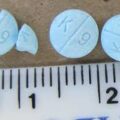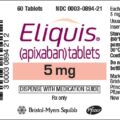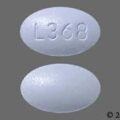Are Trigoxin Pills Real?
Trigoxin and the green pill gained popularity after Run became Hulu’s most-watched original film. The movie features Sarah Paulson as Diane, the mother of a teenage daughter named Chloe, who is chronically ill with arrhythmia, hemochromatosis, diabetes, paralysis and takes a cocktail of pills her mom gives to her each day to manage her condition.
But Trigoxin and the green pill are fictional but similar in name to a real-life drug known as digoxin. According to Healthline, digoxin is a prescription drug that comes as an oral tablet and an oral solution. Digoxin oral tablet is available as the brand-name drug Lanoxin. It’s also available as a generic drug. Generic drugs usually cost less than the brand-name version. In some cases, the brand-name drug and the generic version may be available in different forms and strengths.
Digoxin is used to treat atrial fibrillation and heart failure and works by slowing your heart rate down and improving the way your ventricles are filled with blood. Your ventricles are two of the four chambers of your heart. Atrial fibrillation causes the heart to beat rapidly and irregularly. Digoxin lowers the heart rate and helps bring it under control. While digoxin can slow the heart rate, it cannot return it to normal.
How is digoxin used?
Digoxin is available in three formulations with different doses:
- Tablets: 62.5 micrograms (mcg), 125 mcg, 187.5 mcg, and 250 mcg
- Oral solution: 0.05 mg (50 mcg) per 1 milliliter (mL) dose
- IV injection: 0.5 mg (500 mcg) per 2 mL dose for adults and 0.1 mg (100 mcg) per 2 mL dose for children.
Dosage can vary depending on a person’s age, weight, kidney function, any medications they take, and any coexisting medical conditions they have. Oral digoxin is generally preferred; IV digoxin is reserved for urgent situations or if a person is unable to take anything by mouth. Toxic levels of digoxin are only slightly higher than therapeutic levels.
Whether for adults or children, the total daily dose is calculated based on micrograms per kilograms of body weight per day (mcg/kg/day).
For the treatment of atrial fibrillation, digoxin is usually prescribed with a loading dose, where treatment is initiated with a low dose and gradually increased until the clinical goals are achieved. This helps monitor for toxicity while determining the ideal dose for each person. A loading dose is not needed for heart failure.
Once the clinical goals are achieved, the maintenance dose is taken once daily. Young children may have their daily dose split and take their medication two times per day.
What are the likely side effects of Digoxin?
Digoxin oral tablet does not cause drowsiness. However, it can cause other side effects.
More common side effects
The more common side effects that can occur with digoxin include:
- diarrhea
- dizziness
- headache
If these effects are mild, they may go away within a few days or a couple of weeks. If they’re more severe or don’t go away, talk to your doctor or pharmacist.
Serious side effects
Call your doctor right away if you have serious side effects. Call 911 if your symptoms feel life-threatening or if you think you’re having a medical emergency. Serious side effects and their symptoms can include the following:
- Allergic reactions. Symptoms can include:
o skin rash
o hives
o itching
o swelling of your face, lips, or tongue
o trouble breathing
- Changes in vision. Symptoms can include:
o blurred vision
o vision with a yellow-green tint
- Mental changes. Symptoms can include:
o inability to think clearly
o anxiety
o depression
o hallucinations
- Neurological problems. Symptoms can include:
o confusion
o changes in behavior, such as hallucinations and psychotic episodes
o feeling lightheaded or faint
o headache
- Gastrointestinal problems. Symptoms can include:
o nausea or vomiting
o persistent diarrhea
o severe stomach pain
- Fast, irregular heart rate
- Unexplained bleeding or bruising
- Unusual weakness or tiredness.






